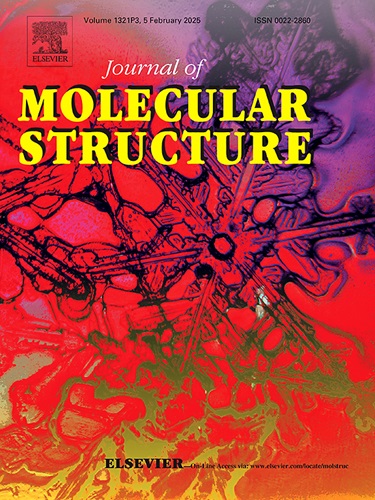Tailoring the edge defects and morphology of g-C3N4 for efficient CO2 conversion to cyclic carbonates
IF 4
2区 化学
Q2 CHEMISTRY, PHYSICAL
引用次数: 0
Abstract
This research endeavors to optimize the morphology and edge defects of g-C3N4 through straightforward pyrolysis of rationally chosen precursors, with the objective of increasing the CO2 conversion efficiency. Our findings reveal that employing melamine and urea as precursors yields tubular g-C3N4 (CN tube), featuring an increased surface area and a greater density of edge defects than melamine-derived bulk g-C3N4 and urea-derived layered g-C3N4. As a result, the obtained CN tube can deliver an impressive yield of 98 % for CO2 cycloaddition with epichlorohydrin at 12 h under mild conditions of 80 °C and 0.1 MPa CO2 pressure, significantly outperforming those derived from melamine (53 %) or urea (66 %) alone. This investigation demonstrated the pivotal role of a tubular architecture and enriched edge defects in facilitating the thermally driven CO2 fixation process to produce cyclic carbonates.
调整g-C3N4的边缘缺陷和形态,以有效地将二氧化碳转化为循环碳酸盐
本研究通过合理选择前驱体的直接热解,优化g-C3N4的形貌和边缘缺陷,以提高CO2转化效率。我们的研究结果表明,采用三聚氰胺和尿素作为前体制备的管状g-C3N4 (CN管)比三聚氰胺衍生的块状g-C3N4和尿素衍生的层状g-C3N4具有更大的表面积和更大的边缘缺陷密度。结果表明,在80°C和0.1 MPa CO2压力的温和条件下,与环氧氯丙烷进行12 h的CO2环加成反应,CN管的收率达到98%,明显优于单独使用三聚氰胺(53%)或尿素(66%)的CN管。该研究证明了管状结构和富集的边缘缺陷在促进热驱动CO2固定过程中产生环状碳酸盐的关键作用。
本文章由计算机程序翻译,如有差异,请以英文原文为准。
求助全文
约1分钟内获得全文
求助全文
来源期刊

Journal of Molecular Structure
化学-物理化学
CiteScore
7.10
自引率
15.80%
发文量
2384
审稿时长
45 days
期刊介绍:
The Journal of Molecular Structure is dedicated to the publication of full-length articles and review papers, providing important new structural information on all types of chemical species including:
• Stable and unstable molecules in all types of environments (vapour, molecular beam, liquid, solution, liquid crystal, solid state, matrix-isolated, surface-absorbed etc.)
• Chemical intermediates
• Molecules in excited states
• Biological molecules
• Polymers.
The methods used may include any combination of spectroscopic and non-spectroscopic techniques, for example:
• Infrared spectroscopy (mid, far, near)
• Raman spectroscopy and non-linear Raman methods (CARS, etc.)
• Electronic absorption spectroscopy
• Optical rotatory dispersion and circular dichroism
• Fluorescence and phosphorescence techniques
• Electron spectroscopies (PES, XPS), EXAFS, etc.
• Microwave spectroscopy
• Electron diffraction
• NMR and ESR spectroscopies
• Mössbauer spectroscopy
• X-ray crystallography
• Charge Density Analyses
• Computational Studies (supplementing experimental methods)
We encourage publications combining theoretical and experimental approaches. The structural insights gained by the studies should be correlated with the properties, activity and/ or reactivity of the molecule under investigation and the relevance of this molecule and its implications should be discussed.
 求助内容:
求助内容: 应助结果提醒方式:
应助结果提醒方式:


